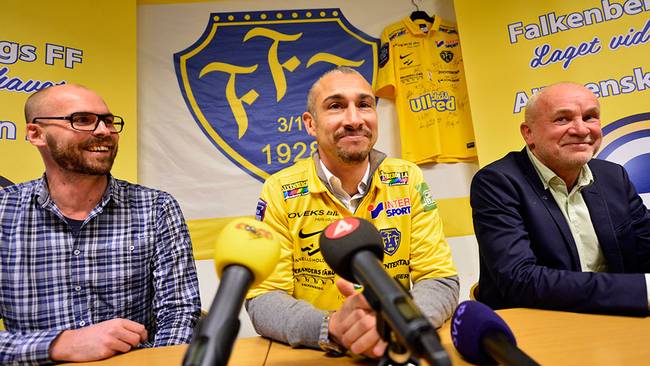Background
The Swedish First Division, Allsvenskan, has been in its current format since 1924, after taking over from the Svenska Serien, the original Swedish First Division. In 2001, the Allsvenskan trophy was named the ‘Lennart Johanssons Pokal’, after the former UEFA President Lennart Johansson. Johansson held his post as UEFA President between 1990 and 2007, and is the longest serving UEFA President to date.
National League
The Allsvenskan consisted of only fourteen teams before 2008, where the total was then increased to sixteen teams. Since 1924, when the Allsvenskan was founded, sixty one clubs have participated in at least one full season, which runs from March to November.
Of the sixteen teams that feature every season, at least two clubs will succumb to the disappointment of relegation to the Superettan. There is the possibility of a third club going down as third bottom in the Allsvenskan play the third placed side in the Superettan, with the winner either staying or being promoted to the Allsvenskan.
The most successful club in Swedish football is Malmo FF with twenty titles to their name, with their last championship coming in 2013 when Rikard Norling guided them to success in his second season in charge. He departed to the club shortly after that title triumph.
The Gaffers
The new manager at the Malmo FF helm is Norwegian Åge Hareide. The sixty year old has managed a number of clubs throughout Scandinavia, with his last permanent job being at Viking in Norway for three years between 2009 and 2012. In his twenty nine years of coaching, Hareide has an impressive CV, which includes an Allsvenskan title in 1999 with Helsingborgs IF, a Danish Superliga (Danish First Division) with Brondby in 2002, and a Tippeligaen (Norwegian First Division) title with Rosenborg back in 2003.
Celtic legend Henrik Larsson took over at recently promoted Falkenbergs FF in 2014 after former boss Hans Eklund left for Kalmar FF. The former Helsingborgs, Barcelona and Manchester United striker first took the plunge into management with Superettan outfit Landskrona in 2009. After spending three years at Landskrona, Larsson left his post and became part of the coaching staff at Högaborgs in 2013 before heading to Falkenbergs in early 2014.
Sweden’s Current Crop
Sweden have always struggled to produce a strong, world beating international side, but they have been able to continuously qualify for major tournaments over the years. Zlatan Ibrahimovic is Sweden’s most notable, and arguably greatest ever footballer, with few Swedes having achieved what the PSG striker has in his career. However, there are a couple of talented youngsters that may catch the eye in the next few years.
Simon Tibbling, who currently plays for Djurgårdens IF in Sweden, is one of Sweden’s most exciting talents at the moment. The nineteen year old midfielder has notched up forty three league appearances for the Stockholm based club since his debut in 2012. Tibbling already has an abundance of international football, making a number of appearances for the Under 17s and Under 19s, and recently broke into the Under 21 side as well.
Emil Bergstrom is another player at Djurgårdens that could be a potential star in the coming seasons. The 6 foot 2 inch centre half has been in the Djurgårdens regular since 2011, despite only being eighteen. Bergstrom has also featured for Sweden’s youth sides, receiving ten caps for the Under 19s, and two for the Under 21s.
AIK central defender Alexander Milosevic was a reported target for English Premier League clubs during the 2014 January transfer window. Arsenal, Liverpool and Fulham, alongside others from across Europe, have all been linked with the twenty two year old. Milosevic has made two caps for the national side, and has apparently been trying to force a move out of Sweden, with his preference being England.
Premier League fans might remember…
Anders Svensson. The Swede spent four seasons with Southampton between 2001 and 2005, and was part of the side that were runners up to Arsenal in the 2003 FA Cup final. Now thirty seven, Svensson has only featured for two sides in his entire career, the other being Allsvenskan side Elfsborg, where he also began his career. In 2013, the midfielder made history by becoming the most capped player in Swedish football history, and retired in the same year, making 148 caps in total.
David Elm. The striker moved to Fulham in 2009 from Allsvenskan side Kalmar, and spent two years at the London club. Elm has spent the rest of his career in the Allsvenskan, beginning his career at Falkenbergs, before moving to Kalmar in 2007, helping them win the 2008 Allsvenskan. After his time at Fulham, Elm went to Elfsborg, winning his second Allsvenskan title in 2012. The Swede, never capped at international level, is now back at Kalmar after moving from Elfsborg in 2013.
